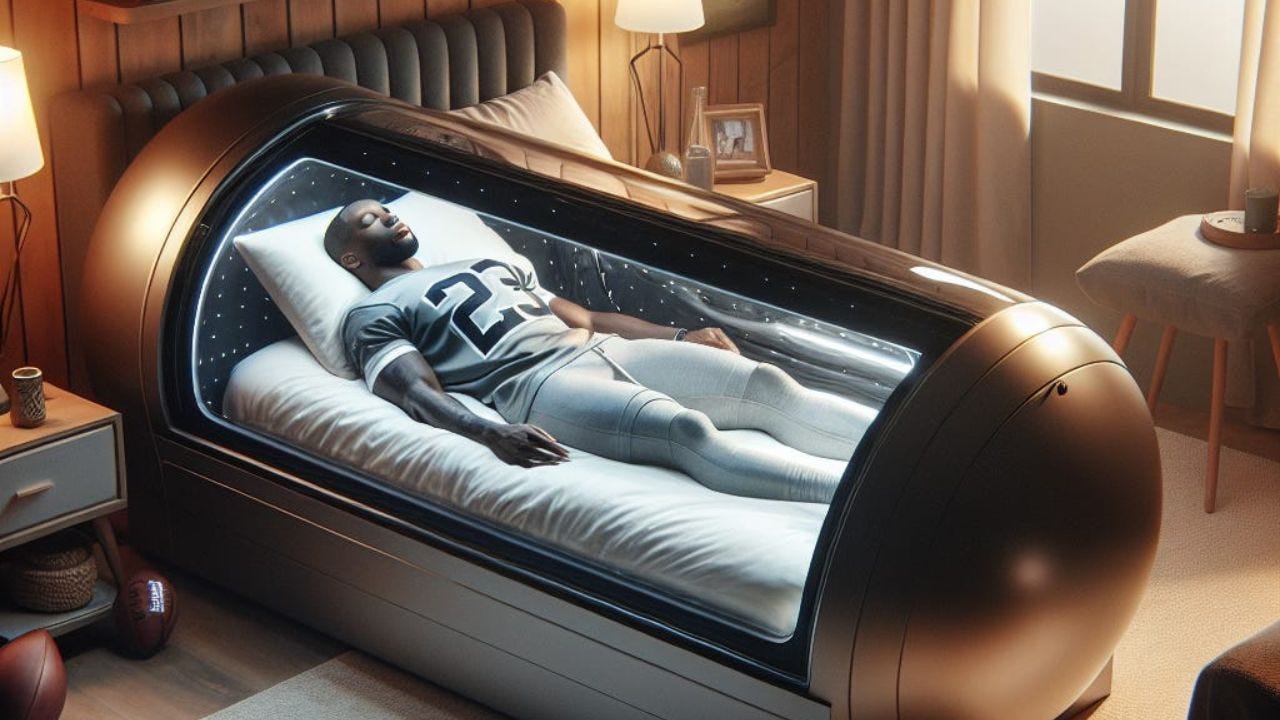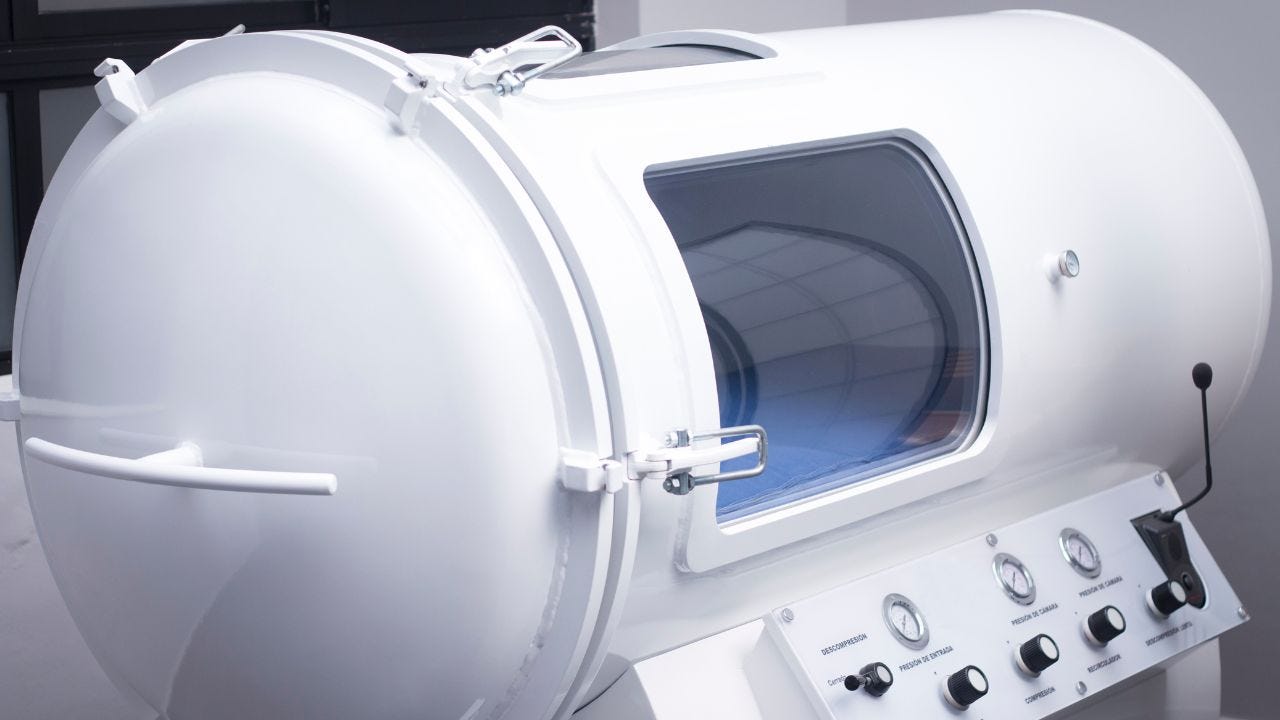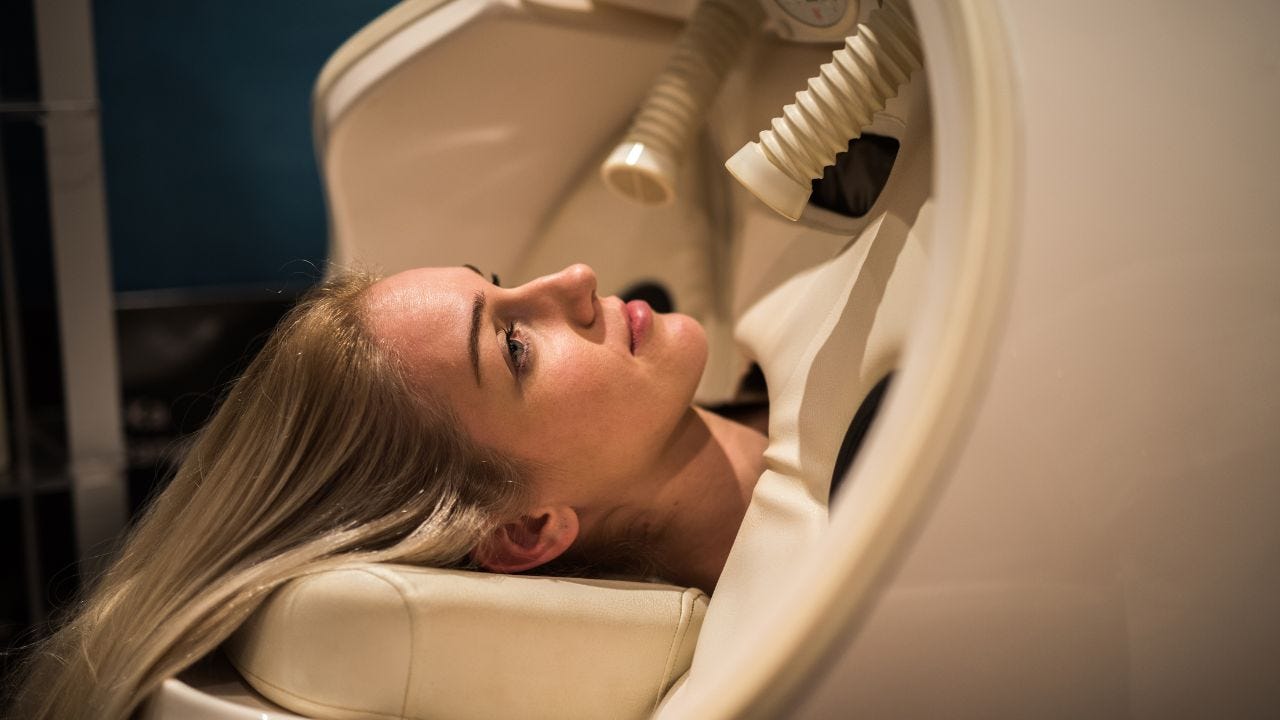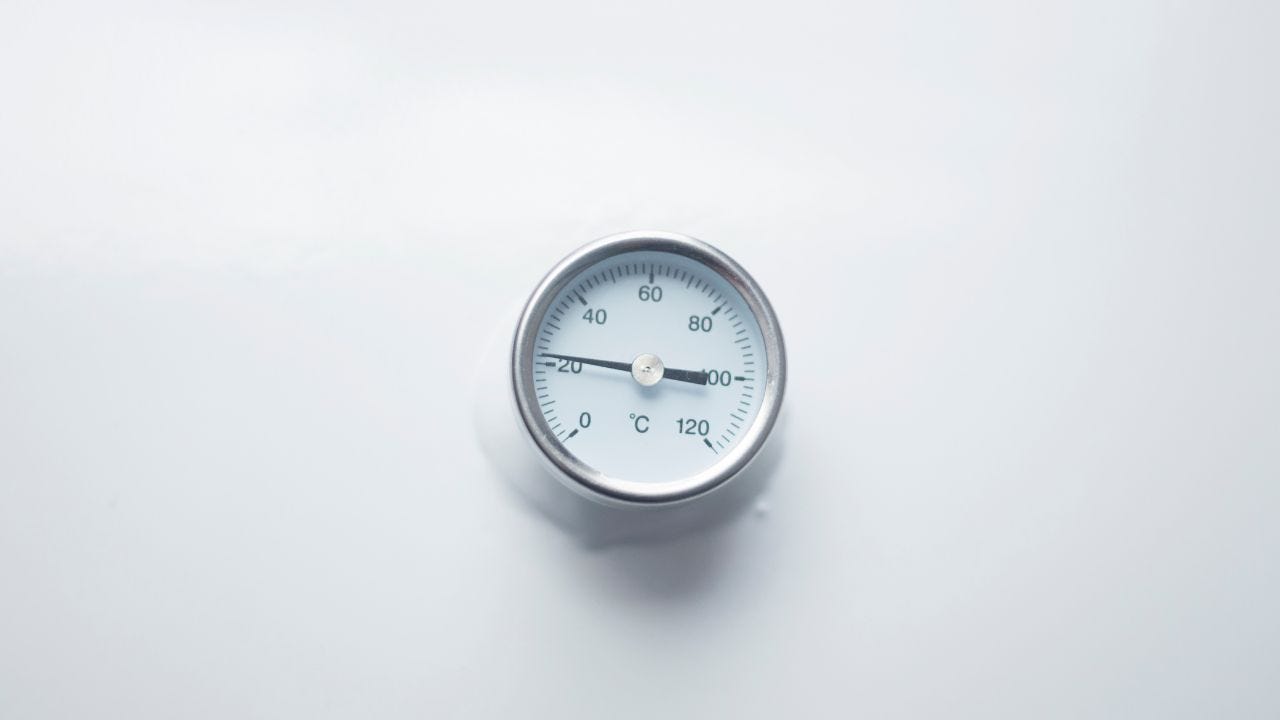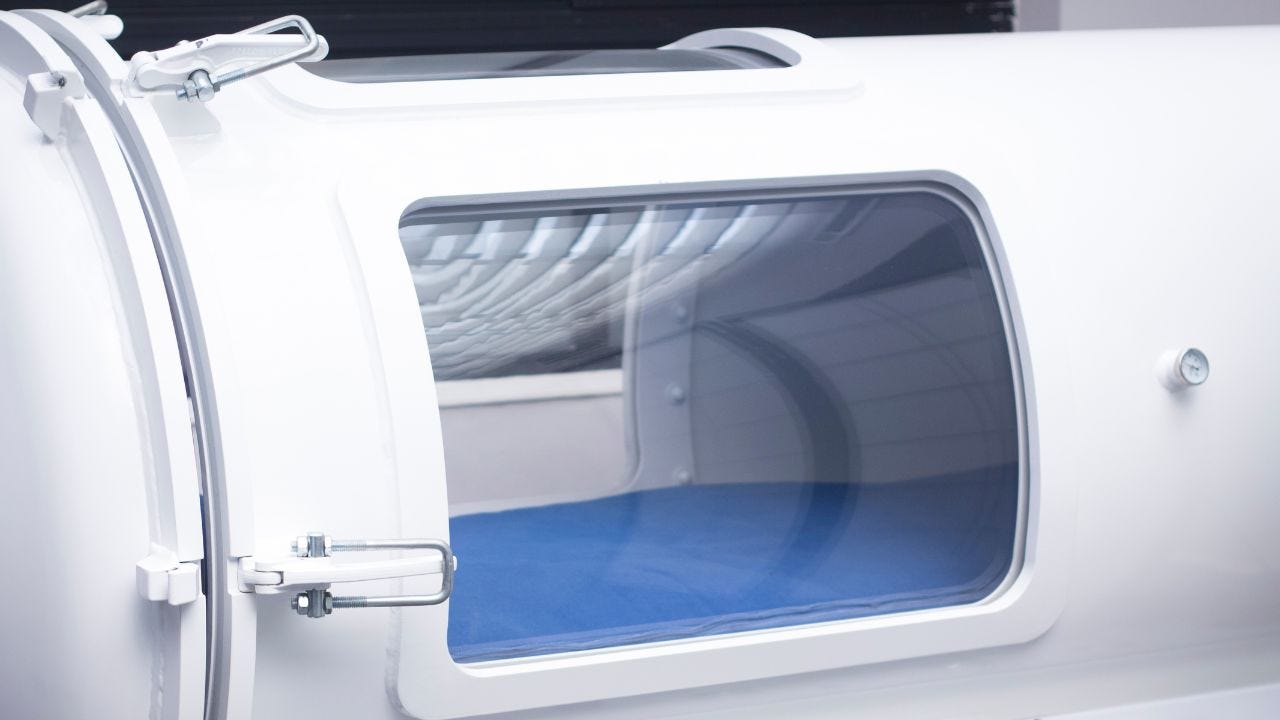Morgan Moses Embraces Hyperbaric Chamber Nights for Faster Rehab
He is effectively 33 feet underwater every night!
Reading about how professional athletes take care of their body puts my own self-care routine to shame. For New York Jets offensive tackle Morgan Moses, recovery is just as important as training. And when it comes to recovery, Moses isn't cutting any corners. His secret weapon? Sleeping in a hyperbaric chamber.
As a hyperbaric oxygen enthusiast, I find this approach fascinating. More and more, we are hearing about athletes spending inordinate amounts of time in what sounds like a cross between a futuristic pod and a medical gadget.
But there's solid science behind this practice, and Moses is banking on it to maintain peak physical performance.
Who Am I?
Hello! I am Dr. Mark Chern, and the author of this article. In the past year, I have been researching potential interventions for improving brain function as it relates to dementia and Alzheimer’s disease. One of the interventions I have been exploring is hyperbaric oxygen therapy, which I have been using on myself and documenting in my substack articles.
I use a hard case hyperbaric oxygen chamber at a pressure of 2.0 ATA. This is akin to placing myself 10 meters (or 33 feet) underwater — and then breathing in pure oxygen.
While the intent of my intervention has been to improve my brain function (find out more on the ReverseBrainAge (RBA) project), I also read up on HBOT in general and share my learnings here on substack.
Let's dive into why the hyperbaric chamber is becoming a popular tool among elite athletes and how it could be a game-changer for injury recovery and performance optimization.
What is a Hyperbaric Chamber?
To first understand how a hyperbaric chamber works, let’s start with the basics. A hyperbaric chamber is a sealed device where
Atmospheric pressure is increased, and
Users breathe 100% oxygen.
This is significantly different from the 21% oxygen we usually breathe at sea level.
The concept isn't new; hyperbaric chambers have long been used in medicine, particularly to treat decompression sickness in divers as well as severe wounds where the tissue is almost dead. But in recent years, athletes like Morgan Moses have co-opted this technology for their recovery protocols.
How does Hyperbaric Oxygen Therapy Work?
Increased oxygen uptake at high pressures is believed to dramatically enhance the body’s ability to heal. The body uses oxygen to repair damaged cells and tissues.
By increasing oxygen delivery to areas of injury or inflammation, hyperbaric oxygen therapy promotes faster regeneration, improved circulation, and reduced swelling.
The Science of Oxygen Therapy in Recovery
Imagine your body is an intricate machine, working tirelessly to repair small tears in your muscles and ligaments after every practice or game. The process requires energy, nutrients, and most importantly, oxygen.
However, when an athlete sustains an injury or undergoes surgery, the demand for oxygen skyrockets. That’s where hyperbaric chambers come in.
Research suggests that hyperbaric oxygen therapy (HBOT):
Accelerates tissue repair: The elevated oxygen levels provide nutrients to cell membranes and mitochondria, supercharging cellular repair.
Reduces edema and inflammation: Injuries often cause swelling, which restricts blood flow. HBOT improves circulation and reduces the fluid buildup around inflamed tissue.
Boosts immune response: Oxygen-rich environments can curb infections and help your body fend off bacteria by aiding white blood cells.
For Moses, who plays in a physically grueling role as an offensive tackle, these benefits are invaluable. Football demands maximum intensity, and the hits endured on the field make recovery a non-negotiable priority.
Why Morgan Moses Swears by Sleeping in the Chamber
While it is still a research experiment for me, long hours in a hyperbaric chamber are not an experiment for Moses — it has become an integral part of his routine.
Protocols for HBOT in regenerative and longevity medicine often recommend short, intermittent sessions, and this is what I have been doing too.
Morgan Moses has taken the usual practice up a notch by committing to overnight stays. Sleeping in the chamber is probably a pretty surreal experience (imagine dozing in what looks like an enormous astronaut pod), but Moses clearly sees the payoff.
Here’s what makes sleeping in the chamber different from short sessions:
Extended Exposure: Overnight use allows extended oxygen absorption, amplifying the healing process compared to short, hour-long sessions.
Convenience: As a professional athlete, there's constant pressure to balance training, games, media commitments, and family time. By sleeping in the chamber, Moses can "double-dip" into recovery while getting his rest.
Cumulative Benefits: Regular, sustained hyperbaric therapy builds on its benefits over time, making it especially effective for long-term recovery goals.
Moses' utilization of the chamber stems not only from necessity but also a proactive approach to keeping his body conditioned for NFL action. It’s a smart tactic, especially considering the physical toll professional football takes over a season.
Different Protocols in Hyperbaric Oxygen Therapy
Anyone deep in the hyperbaric oxygen rabbit hole knows that there are protocols for different situations. In the case of Morgan Moses and LeBron James, recovery is the main goal of HBOT.
For this reason, the sessions focus on pushing oxygen into every nook and cranny of the body, so that tissues get the oxygen they need to quickly recover. This is one reason why Moses may benefit from sleeping overnight in the hyperbaric chamber.
For mere mortals like me, the chosen protocol is built off Dr Shai Efrati’s protocol. In this protocol, there is a component of oxygen overload, which is then followed by a component of relative oxygen deficit.
This is part of what Efrati called the Hyperoxia-Hypoxia Paradox – when the body goes from 100% oxygen at double atmospheric pressure to reduced oxygen and normal atmospheric pressure. For this reason, it is not time in the chamber, but the number of times you go in and out of the chamber that helps with reversing brain age.
Success Stories Beyond the Football Field
Morgan Moses is far from the first athlete to embrace hyperbaric therapy, but his dedication to sleeping in the chamber is putting him in a special category. Across the sports spectrum, the list of HBOT supporters grows longer by the day:
LeBron James and his hyperbaric chamber: The NBA superstar is known for sparing no expense when it comes to recovery, and a hyperbaric chamber is a prominent feature of his regimen. It's just one part of his $1.5 million annual recovery budget.
Cristiano Ronaldo uses HBOT for injuries: The soccer legend has used HBOT to recover quickly after injuries, enhancing his longevity in one of the world's most demanding sports.
Joe Namath needed help for traumatic brain injury: Funnily enough, Namath—the former Jets quarterback—used hyperbaric oxygen therapy to help with post-concussion symptoms years after retiring from football.
While the efficacy of hyperbaric treatment still sparks debate among some medical professionals, these athletes’ consistent use and results serve as anecdotal evidence of its value.
Are There Drawbacks to Hyperbaric Oxygen?
As much as I love the newfangled science backing HBOT, it's important to keep the discussion balanced. There are some caveats to hyperbaric oxygen therapy:
Cost: Hyperbaric chambers don’t come cheap. While professional athletes like Moses can afford this advanced technology, it’s not readily accessible to the average person.
Limited Research: While there’s growing evidence that HBOT helps with recovery, rigorous, large-scale clinical trials remain limited for its use in sports injuries.
Risk of Side Effects: Prolonged exposure to high oxygen levels can sometimes have adverse effects such as oxygen toxicity or ear discomfort due to pressure changes. These are rare but worth noting.
The Takeaway: Science Meets Dedication
When I reflect on Morgan Moses’ commitment to innovation in his recovery, it’s clear that elite athletes are always seeking the next edge. Whether it’s improved training techniques, dietary optimization, or cutting-edge therapy, the line between science and sports continues to blur.
For Moses, the hyperbaric chamber is more than just a fancy gadget; it’s a testament to how seriously he takes self-care and longevity. And he’s not alone. Whether you’re an NFL lineman battling in the trenches or a weekend warrior recovering from a marathon, the lesson is simple: investing in your recovery pays dividends.
As the science behind hyperbaric therapy continues to evolve, who knows? Maybe, someday, sleeping in pressurized pods will be as commonplace as foam rollers and ice baths in athletic training rooms. Until then, forward-thinking athletes like Morgan Moses will continue to lead the charge – one oxygen-rich night at a time.
My Bio
My name is Dr. Mark Chern, and my interests are in how we can slow down brain aging. Subscribe to my Substack if you want to follow my journey and get updated on new findings as it relates to the HBOT and the brain.


